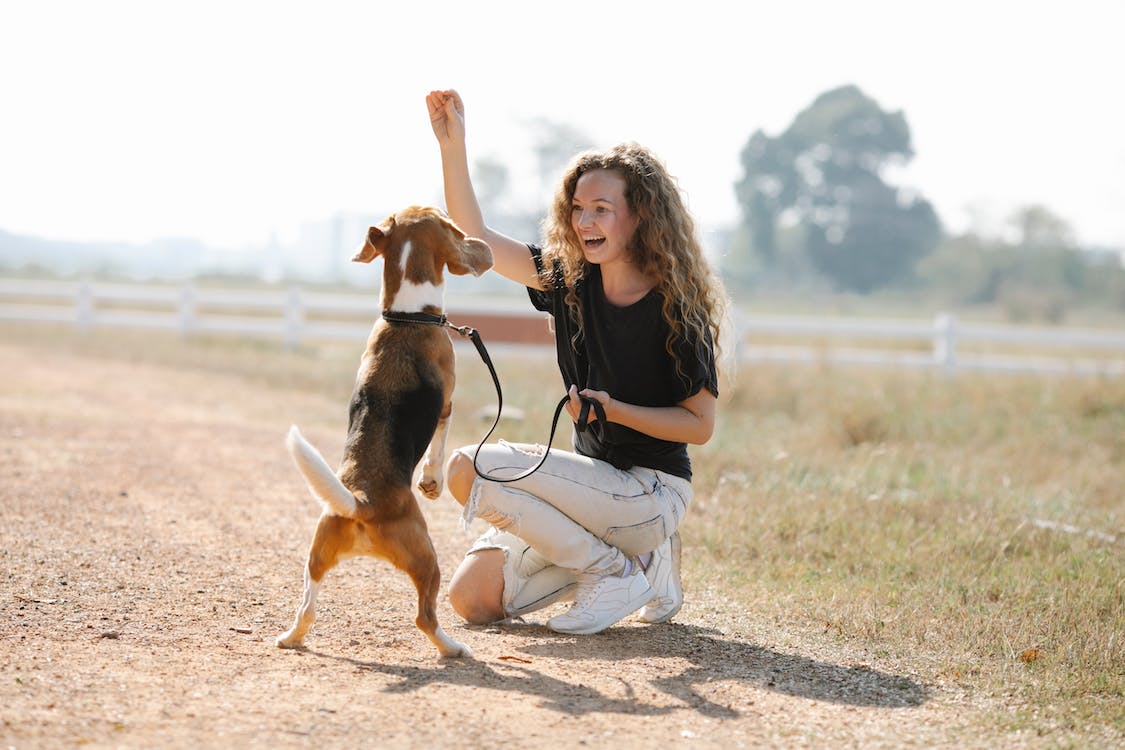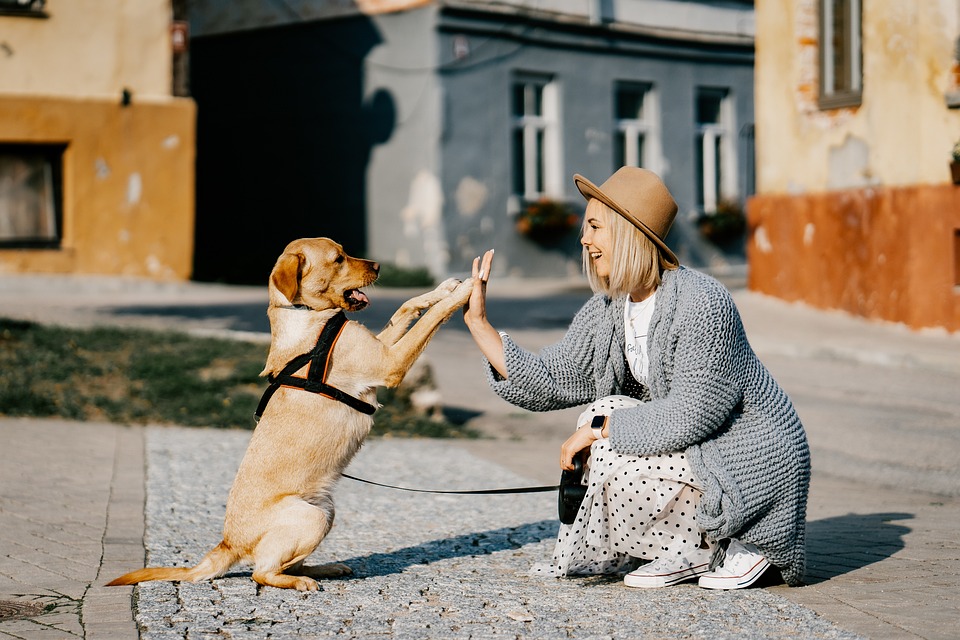As a pet parent, you must know the right training frequency for your pup based on their behavior to determine the best training method, such as positive reinforcement, clicker training, or shaping.
The frequency and duration of dog training sessions depend on age, breed, and lifestyle, with puppies benefitting from daily sessions lasting 5-10 minutes, while older dogs benefit from longer sessions.
Consistent and timely training can enhance dogs’ obedience, behavior, fitness, mental stimulation, and socialization.
Read on to understand the benefits of training sessions and the frequency to consider while curbing your pet.
Right Frequency of Dog Training Sessions
Training your pup from a tender age is crucial for developing good habits; starting from 8-10 weeks will be the best.
Teaching the same skill to dogs for a week helps them learn more quickly.
Puppies have shorter attention spans and need more frequent reinforcement of positive behaviors. Therefore, quicker and more frequent training sessions are helpful.
However, the number and length of sessions for mature dogs can go long because they can quickly focus and learn a new skill.
Training list for 8-10 week old pups:
- Potty Training.
- Crate and threshold training.
- Mouthing and redirect chewing.
- Name recognition and responding.
- Basic commands such as come and sit.
- Socialization with family members.
Training list for 10-12 week old pups:
- Introduction to harness and leash.
- Threshold training in doorways.
- Impulse control for food and water.
- Behavioral commands like pace and down.
- Habitual to outside noises.
Training list for 3-4-month-old pups:
- Play times like fetch and tug.
- A command for indoor behaviors like hold, stay and drop it.
- Walking outdoors and park activities.
Training list for 4-6 months old pups:
- Guide and heel training.
- Advanced outdoor commands to maintain distance and duration in new locations.
- Gradually stopping food treats in training.
Training list for six months-1-year-old pups:
- Regular daily schedule for walks and outdoor exercises.
- Reinforcement exercises to overcome destructive behavior.
- Advanced commands like rollover.
- Curb them for proper urination training.
Effects of Training Sessions on Dogs
Training sessions can benefit dogs in many ways.
It will encourage better behavior, mental and physical stimulation, decreased stress and anxiety, improved socialization, and boost a loving relationship with the parent.
Here are the effects of training sessions on dogs.
1.Enhances Obedience
Dog training is an effective tool for raising a dog’s level of obedience because it gives them the proper guidance to act in various circumstances.
It will help if you enroll your pup in an obedience class and incorporate focus training in the distracting environment and daily exercise.
Moreover, you must communicate with your pup with hand signals and body language to help them understand your commands better.

How does canine training enhance obedience
- It helps to establish clear communication between parent and pet.
- It helps to reinforce positive behavior.
- Strengthens the bond between dog and family members.
- It helps to reduce unwanted behaviors such as barking, jumping, whining, etc.
- Helps to keep your dog safe.
Tips for training your dog to enhance obedience
- Train with basic commands like stay, come and sit.
- Be consistent and use the exact words in regular training.
- Use verbal praise when your dog follows orders.
- Be patient and mark the progress.
- Keep training duration short.
2. Improves Behavior
Dog training incorporates positive reinforcements to improve behavior, eliminate bad habits and teach new ones, which leads to behavior improvement over time.
Additionally, behavior reconstruction teaching involves cues like sit, stay, come, heel, and attention-catching tricks.
It is best to embed leash and clicker training in daily routines to groom appropriate dog behavior.

How does canine training help improve behavior?
- It helps to encourage good behavior.
- It makes dogs more attached to their owners and motivates them to please them.
- Social training can help your dog engage with its surroundings and respond positively.
- Helps to develop better eating habits.
- Prevents destructive habits like chewing, digging, barking, etc.
Tips for training your dog to improve behavior:
- Praise when your dog behaves in a good way.
- Reward with pat for older dogs and treat for young ones.
- Establish a daily routine that involves a lot of playing activities.
- Provide dog toys in case your dog keeps chewing objects.
- Choose a better training method for your dogs.
- Avoid punishment and hyper reacting.
3. Physical Fitness
Fitness training like walking, running, swimming, and games like fetching makes your pet fit and helps overcome the risk of heart disease.
It’s crucial to start slowly and gradually build the intensity and duration of fitness training to avoid injuries.
Moreover, it will help if you take suggestions from the vet to ensure your dog is healthy enough to exercise and get tips for practical activities based on your dog’s breed, age, and health.
.jpg)
How does canine training help make pets fit?
- Physical activities like running and playing can improve the strength and stamina of your pet.
- Improves cardiovascular health.
- Boosts immune system.
- Maintains a healthy weight.
- Reduces the risk of obesity.
Tips for training your dog to maintain fit and healthy:
- Take your dog daily for walks and runs.
- Provide nutrient-rich foods.
- Maintain food proportions based on your dog’s breed, size, and activity.
- Keep your training session enjoyable.
- Take your dog for a routine vet checkup.
4.Boost Mental Stimulation
Did you know one out of five dogs suffers from anxiety and depression worldwide?
Mental activity is equally crucial for your dog’s health as physical.
Therefore, exercises that encourage mental stimulation, problem-solving abilities, and positive reinforcement should be adopted as a part of canine training.
These techniques can help dogs feel less stressed and anxious while improving their mental health.

How does canine training boost mental stimulation in pets?
- Helps to prevent anxiety and aggression.
- Helps to promote cognitive behavior.
- Helps to avoid boredom and tension.
- Helps to stimulate your dog’s mind.
- Helps to enhance focus and attention.
Tips for training your dog to boost mental stimulation:
- Provide tricky toys like puzzle solving.
- Keep training sessions short and frequent, for example, 5-10 minutes twice daily.
- Change the training environment.
- Incorporate playing time in between the training sessions.
- Use training methods like clicker training and shaping.
- Provide interactive toys like a ball, tug toy, etc.
- Give your pup a calming and stress-relieving massage.
5.Socialization
Exposing your dog to people and other canines helps them to socialize. Socializing your dog does not require a specific type of training.
You can take your dog to the park or group dog classes for training sessions to help them feel at ease in the outside world.
It can increase security, mostly when navigating traffic or socializing with canine companions, and strengthens the bond between pet and parent.
The best time to make your pet friendly with a new environment is 3-4 weeks.

How does canine training help socialize your pets?
- Interaction with other dogs and people.
- Promotes socialization skills.
- Helps to improve concentration and attention span.
- Learning new things can create positive associations in a dog’s mind.
- Promotes adaptability in new places.
Tips for training your dog to socialize:
- Take your dog to group puppy training classes.
- Make controlled interactions with humans in a supervised way.
- Please do not force your dog into disruptive situations because it can cause trauma.
- Be patient and start with small encounters with other people.
- Enroll your dog in a socialization class.
Conclusion:
It is essential to balance the frequency and your dog’s training demands because too much training may overwhelm or stress out your pup.
Therefore, finding the appropriate frequency and length of comfortable training sessions for the dog and the trainer is the key to successful dog training.
Moreover, you can start slow and increase the number of training sessions until your dog enjoys and masters the behavior you are working on.
Contact the Best Pet Hospital in Urbandale for Best doggy daycare and reach our certified veterinarian to seek help while training your dogs.